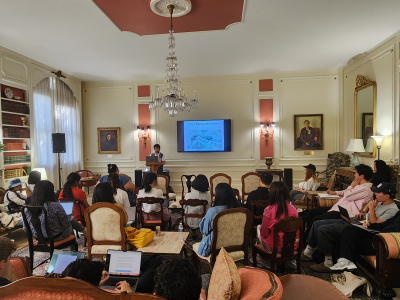AADS Student Worker

Asian Americans, Takeo Rivera posits, cannot escape the model minority figure. Rivera puts forth two pathways through which Asian/American people define their relationship to model minority – and, by extension, form the contours of an uneasy racial identity. The first group he outlines is characterized by a pleasurable attachment to the model minority positionality, embracing the stereotype and rising through U.S. capitalist hierarchies into American-Dream-esque success. The second group takes a stance of self-punishing repudiation, rejecting Asian people who support anti-Black ideologies often bound up with model minority mindsets. Despite their superficial differences, he argues, both positions are in principle masochistic.
His book, Model Minority Masochism, investigates the origins and evolution of the stubborn phantasm of “model minority” which has impeded the progress of Asian American politics for over fifty years. The model minority idea serves two discourses: providing evidence for the prominence of meritocracy, and, consequently, implicitly blaming less ‘successful’ minoritized populations for their failure to win equivalent success. Asian America has often sought to idealize the ideal critical subject and achieved some sort of consciousness against or through the idea of the model minority. Model minority masochism, then, is the effective response to model minority racialization which blurs the boundaries between subjugation, pleasure, and moral authority. By thinking through this term, Rivera asks what it means to be pleasured by one’s own oppression, a question that remains a universal aspect of subjectivity.
Rivera read part of the first chapter of his book, entitled “Vincent Chin’s Wedding: Techno-Orientalist Becoming and Asian American Liberalism.” It takes the moment of Vincent Chin’s death as a critical one for the formation of a liberal Asian American identity, one inaugurated by the disavowal of sexuality and ambivalent relationships to objecthood and machinehood. Rivera analyzes the historical moment in which Chin’s death blossomed in consequence, from the white anxiety of foreign threat that was projected onto Asiatic bodies to the masochistic operation of the Detroit car industry itself. Ultimately, in the chapter and in the book, Rivera asks what the limits of an Asian American racial identity formed around a model minority dialectic are. Drawing on disciplines from across Asian American Studies, he grounds today’s complex Asian American politics in a new retelling of Asian American histories.